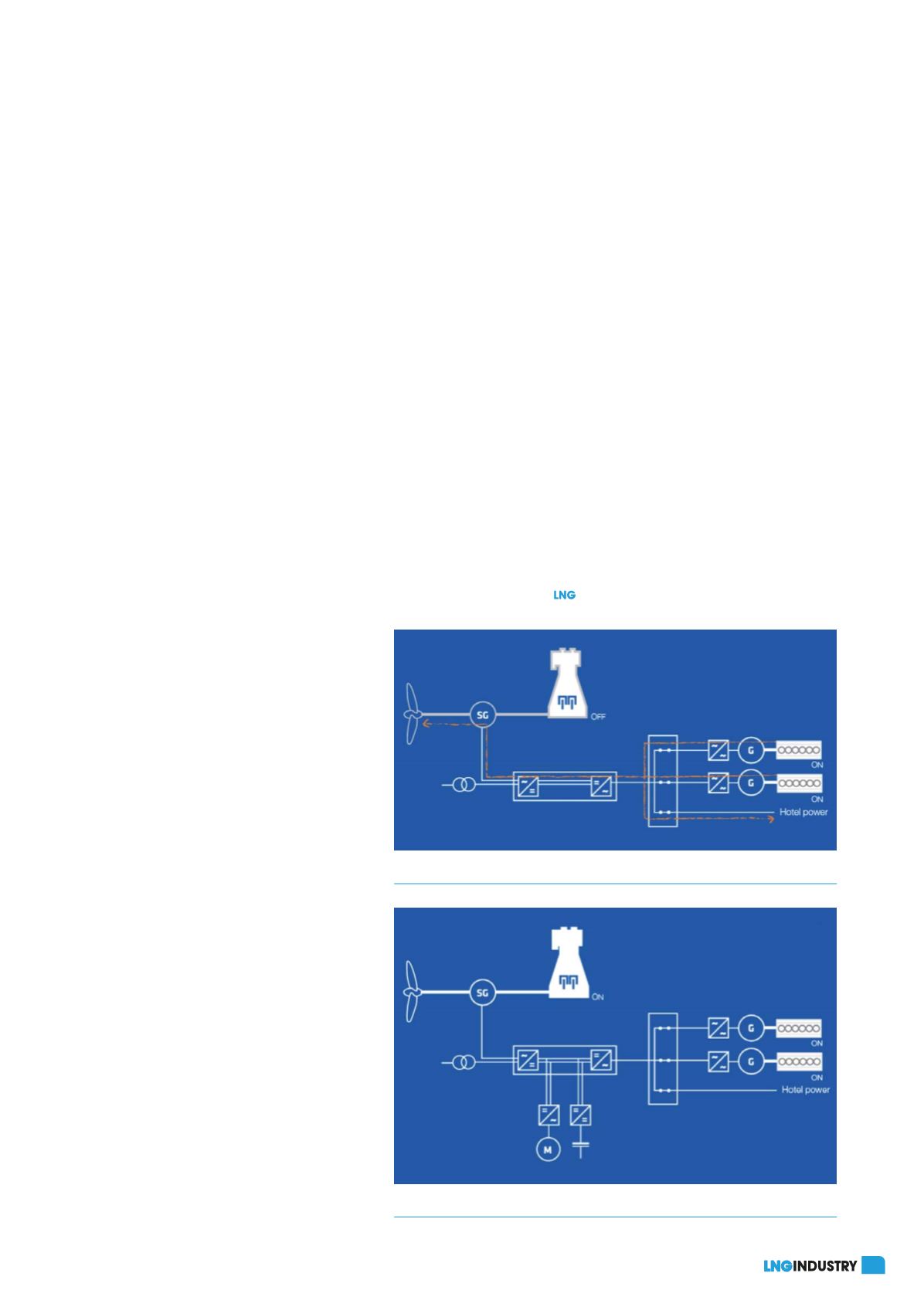
January 2020
23
Both the auxiliary generators and the shaft generator
are used to boost the main engine’s propulsion power in
this mode. Therefore, it is possible to select a main engine
with reduced power and size ratings for an LNG tanker,
with the option of utilising boost mode for extra power
when necessary.
As new legislation for cleaner seas come into force, it is
important for vessels to be able to comply with the latest
environmental and safety regulations as they enter or leave
a port. TMH mode allows for the main engine to be
disconnected from the propeller shaft in a case of main
engine failure. The shaft generator is run as a motor to
power the propeller along with all necessary electric power
coming in from the gensets.
This propulsion operation enables vessels to safely
enter or leave a port, while decreasing environmentally
harmful emissions. More specifically, this mode can be used
to take a vessel the so-called ‘last mile,’ allowing it to
comply with new port regulations that require lower SO
x
,
NO
x
and noise levels.
Another benefit of this mode is that it allows vessels to
escape swiftly from a harbour if a fire breaks out, without
using the main engine.
DC link for new designs
With the inclusion of a DC/DC converter and battery bank,
PTI mode can achieve advanced operational optimisation.
The DC link creates new possibilities for modern ship
designs. For example, the main switchboard
can be smaller, and high power consuming
components – such as big pumps, thrusters or
battery banks – can be run more efficiently.
Utilising batteries for the DC link opens a
broad range of opportunities. They can replace
one genset as spinning reserve or improve the
system dynamics in which gas engines,
especially, react slowly to any change in power
demand.
Power availability is excellent, since the
main engine or gensets can adapt in an
economical way to the changing conditions at
their own pace. This leads to improved
efficiency and lower consumption.
Value for shipowners
PM technology offers a wide variety of
functionalities provided through different
operating modes, giving ships an opportunity
to fully optimise their operations. In stormy
weather or when navigating through
challenging rocky coastal areas, heavy traffic
and harsh offshore conditions increase the risk
of collision.
Two propulsion lines provide good
redundancy, and safety can be even further
increased by using high-efficiency PM
generators. Their double-wound machines can
continue to operate, even if one drive is out of
order, lifting safety to a completely new level.
Additionally, it is possible to optimise the
dimensions of the main engine, auxiliary
gensets and other major components, so the
vessels can run much more efficiently, proactively
responding to the fluctuating demands on their loads.
Taking advantage of operating modes leads to
high-efficiency performance at partial loads. Fuel
consumption can be reduced, overdimensioning eliminated
and emissions cut. In the end, shipowners stand to gain
higher profit margins from their LNG tanker operations.
Win-win: efficiency and
redundancy
It is challenging for small LNG tankers, in particular, to
continue to maintain efficiency in the varying conditions
where they operate. Having equipment that offers flexibility
is key. Also, the ability to transfer energy from any place in
the system to provide power to run the vessel increases
redundancy substantially.
By using the various operating modes available, LNG
tankers can become more future-flexible and run in the
most optimal way, taking all parameters into consideration.
LNG tankers equipped with PM shaft generators can reach
higher efficiency rates at partial loads and gain from the
flexibility to run on future fuels.
An example of a success story in this field is the world’s
first LNG-fuelled bulk carrier,
M/S Viikki
, which just received
a five-star environmental rating from the Clean Shipping
Index. The vessel was aided in its success by its PM
machines, supplied by Yaskawa Environmental Energy/
The Switch.
Figure 4.
DC Link mode.
Figure 3.
Take me home mode.








